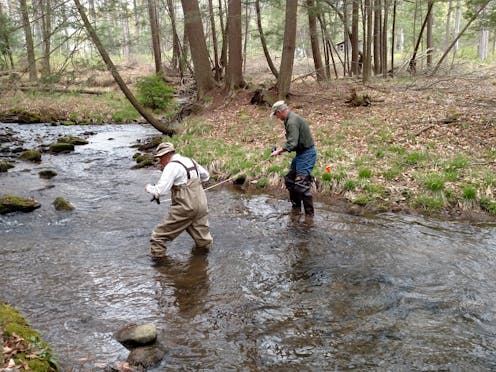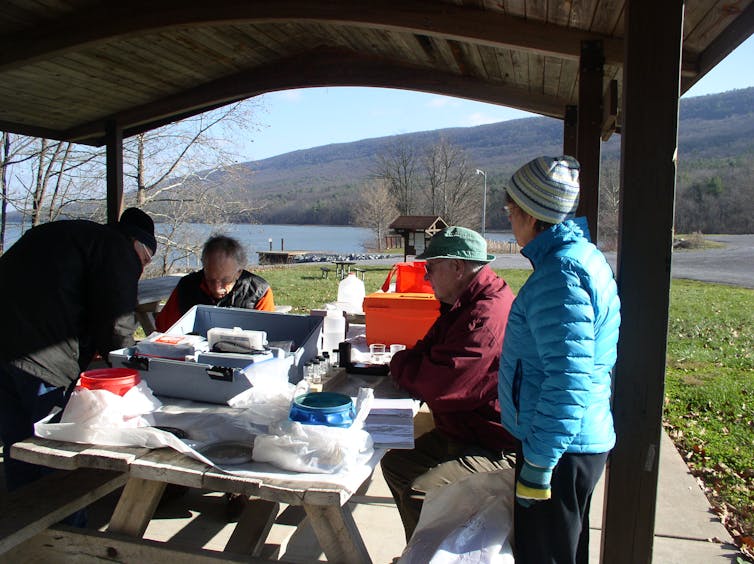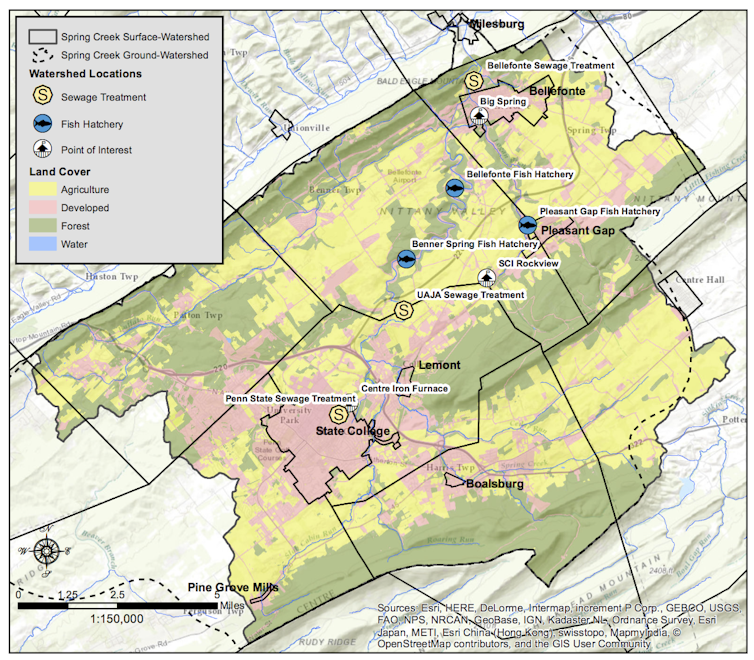How monitoring local water supplies can build community
When people form local networks to take care of resources such as drinking water, they strengthen their communities. Technology can support these efforts and promote learning and innovation.

Water insecurity is a touchstone for 2018. Our planet isn’t running out of water, but various kinds of mismanagement have led to local water crises across the planet, directly threatening millions of people.
Ensuring water quality requires regular testing, protecting source water, monitoring and repairing distribution systems, treatment plants and other infrastructure, and developing the ability to recycle water and desalinate salt water. These activities require many types of specialists. But they can also benefit from the direct participation of engaged citizens, who themselves can also benefit from getting involved with this work.
Most of my career has focused on information sciences and technology. Over the past 40 years, I have investigated cases in which people creatively mastered information and technology that was poorly designed relative to their needs, or applied technology to problems it was not originally designed for, such as strengthening local heritage, community governance or collaborative learning. I have learned that making technology effective often requires the creative engagement of everyone who is affected by it.
Contemporary reports on failing water systems tend to overlook the critical roles that citizens can play in addressing environmental challenges at the local level. Water systems are human-technology interactions. Engaged and informed volunteers who are committed to protecting water quality are as critical to a successful water system as pumps and filters.

Taking responsibility for water systems
In the course of a research project on citizen-initiated health collaborations, I learned that people in my own community in central Pennsylvania were deeply involved in monitoring local water quality. Many Americans probably think of this as a job for state or local government agencies. But it also can be a community engagement activity, much like working at a food bank, driving for Meals on Wheels or building homes with Habitat for Humanity.
This does not mean the work is any less about environmental protection. Rather, it incorporates environmental protection into the core of hyperlocal community work – the actions people take locally to strengthen their communities.
Roughly 100,000 people live in the Spring Creek watershed in central Pennsylvania. Spring Creek is a well-known trout fishery, but the region faces ongoing water quality challenges, including agricultural runoff, stormwater silt and invasive species. It also has legacy pollution sources, including abandoned clay and coal mines and a chemical plant that was a Superfund site in the 1980s. Future challenges include a threat of runoff from Marcellus Shale gas drilling.
Several dozen local groups – including nonprofits, municipal entities and regional water and sewer authorities – carry out a wide variety of water quality testing programs. Each group gathers and organizes its own data sets, but they also coordinate through overlapping memberships, arrangements to share equipment, space, funding and data, and initiatives involving multiple townships and boroughs, which the groups sometimes create themselves.

Citizen water monitoring connects communities
Although these groups have only a few hundred members in total, they are involved in many activities. They advise municipalities and the public on watershed issues, such as development proposals. They also coordinate planning among towns, conduct outreach programs at public schools, observe and collect samples at field sites, and interact with testing laboratories and government agencies.
Some groups have developed data sets and analyses that are curated and published online or available by request. They also have produced a community watershed atlas, which explains what the watershed is, how it works and how it serves the people who live in it.
Several groups that mainly collect data consist almost entirely of older adults. For example, members of the Pennsylvania Senior Environmental Corps work in teams of four to six, regularly visiting sites throughout the watershed to measure about 40 data points per site, including water chemistry, stream flow characteristics and counts of macro invertebrates.
Members of Trout Unlimited focus specifically on indicators of healthy fish populations, such as identifying trout spawning nests. This involves regular physical work and social interaction, so the groups coproduce better community and personal health as they protect local water resources.
There are 350 local nonprofit water quality groups in Pennsylvania alone. These volunteer groups could be seen as a transitional workaround whose work will eventually be replaced by remote sensor networks. But that is a narrow view of what they do for local communities and for people. Automation will not engage citizens in learning about water resources, or provide meaningful and rigorous tasks that motivate them to be active outdoors.
Leveraging citizen water activism more effectively
These water monitoring initiatives are sustainable and valuable. They are a hyperlocal variety of citizen science – citizens organizing and carrying out water monitoring activities in their own communities.
Their work produces more than data. It strengthens trust and social capital throughout the community, and makes people more aware of local water challenges. It cultivates critical environmental knowledge and skills, and gives volunteers meaningful work.
But it could be even more beneficial. My Penn State colleagues and I are working with citizens in central Pennsylvania to design and develop a community water quality data platform, which would integrate and amplify local groups’ and government agencies’ diverse data sets, making it easier to visualize and analyze water quality data.
Clean water groups could use this tool to explore scenarios, such as enhancing riparian buffers – planted zones near stream banks – to mitigate impacts from springtime agricultural runoff or summertime thermal pollution episodes. Using data this way could make watershed events and patterns more accessible to residents, and more effective as opportunities for learning and engagement.
This platform could make it easier for citizens to become knowledgeable about water resources, and more generally, about data visualization and analysis and data-driven thinking. We do not think fixing failing water systems should be up to citizens, but we believe it is better for everyone if citizens are informed and engaged about their water supplies. It would be nice to assume that responsible authorities will ensure our water is clean and safe, but examples like the drinking water crisis in Flint, Michigan, show that this is not always true.
In Spring Creek, and probably many other locations, promising local networks like this are hidden in plain sight. Once they are identified, communities can leverage them. And others can work to foster them where they do not yet exist.
John M. Carroll receives funding from the US National Science Foundation. In the past I received funding from Apple, Intel, Microsoft, the Society of Technical Communication, the US Department of Education, the US Office of Naval Research, the Hitachi Foundation, and the Knight Foundation.
Read These Next
As DOJ begins to release Epstein files, his many victims deserve more attention than the powerful me
Powerful men connected to Jeffrey Epstein are named, dissected and speculated about. The survivors,…
The world risks forgetting one of humanity’s greatest triumphs as polio nears global eradication − 7
Polio may finally be defeated in the next 5 years. Will the world recognize what an extraordinary achievement…
Medieval peasants probably enjoyed their holiday festivities more than you do
The Middle Ages weren’t as dreary and desperate as you’d think, and peasants often had weeks of…





